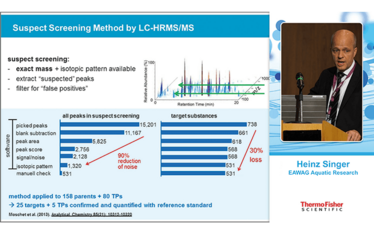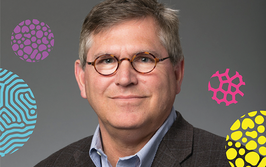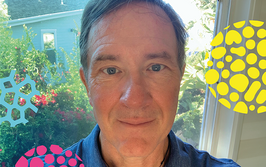Protecting Our Most Precious Resource: Water
New analytical capability can have a significant impact on research direction. In environmental analysis, high-resolution accurate mass (HRAM) mass spectrometry is allowing us to explore uncharted aspects of our increasingly complex chemical world.
sponsored by Thermo Fisher Scientific
I’ve been at the department of environmental chemistry at Eawag for 18 years, though I am very much an analytical chemist at heart. Environmental analysis demands highly sensitive and reliable methods and I love to develop such methods, so my current role is an excellent fit. My interest in analytical techniques is very much linked to the fact that I’ve always been a technophile – I am fascinated by the capabilities of new technology and systems. René Schwarzenbach, a professor of environmental chemistry at ETH Zurich, also set me off down the right path. I was René’s first diploma student and his ambitious and motivated character was infectious.
We all know (but possibly don’t often consider) that clean water is our most precious resource. At Eawag we are constantly investigating concepts and technologies that help the world deal sustainably with water bodies. Indeed, we only have one focus at Eawag: water. But many different disciplines – for example, microbiology, engineering, analytical chemistry – must work together to find solutions, which makes Eawag a fantastic place to be. The importance of water will only grow in the future; we use more water than ever before, we’re living in an increasingly chemical world, and water is a great solvent.
Hot trends
Around five years ago, people used to believe that we’d learnt all we could about pesticides in water and that we didn’t need to push analysis much further – it almost seemed an old-fashioned research area. But I realized that was simply not true. By their very nature, pesticides are designed to harm life in some way, which makes pesticide analysis highly relevant in water analysis – particularly in countries where regulations are less strict. Three challenges drive my interest in this area: (i) the large number of analytes, (ii) low ecotoxicological limits, and (iii) highly dynamic (rain-driven) concentration ranges.
More broadly, the screening of unknown compounds is another hot area right now. There are still unknown compounds in our water, and I don’t doubt that they are important. New analytical tools are allowing us to investigate these hidden pollutants like never before.
But perhaps the hottest topic right now is contamination from industrial point sources. At the border between Switzerland and Germany there is a monitoring station, operated by the Cantonal Office of Environment and Energy Basel-City, that conducts non-targeted screening on the river Rhine using our methods and we occasionally witness huge spikes over a short period of time. Contaminants include pharmaceuticals, pesticides, and intermediates of chemical synthesis – and the load can be significant. Many researchers believed this particular problem had been solved by restrictions on industrial wastewater release, but our newfound ability to conduct non-targeted screening has proven us wrong. Evidently, we were not always looking for the right compounds of interest. We’ve been concentrating on risk assessments based on usage and modeling – but that is clearly not sufficient.
Monitoring industrial point source contamination is particularly challenging because it not only encompasses a huge universe of potential chemicals, but it is also dependent on time and space. Tools that allow us better coverage in terms of all aspects are therefore important.
Pesticides that are not introduced by industrial processes also exist in this complex analytical space. As noted above, concentrations in surface water are highly dependent on time (increasing with rain fall) and also location (not all areas have the same amount of agricultural land, and different crops require the use of different pesticides). This complexity – and the diverse range of pesticides in our environment – stretches our methods to the limit. Moreover, it means that choosing the right sampling technique is paramount.
What’s in a sample?
There are essentially two kinds of sampling devices: passive and active. Passive sampling devices are exciting because they can perform sampling and enrichment at the site of sampling (wherever they are needed) and are easy to use. Plus, with the right kind of sorbent material, you can collect both polar and non-polar compounds. Passive sampling results in a time-weighted composite sample, but quantitation demands complex calibration because sampling rate is dependent on river flow, temperature and other factors – so they are not perfect. Active samplers, on the other hand, are more difficult to use, but are the method of choice for quantitative measurements.
Robotic sampling devices that can patrol areas or be remotely controlled are likely to present the future of sampling – and some research groups are already experimenting with such technology. An added advantage of remote controlled drones is that you can take horizontal or vertical profiles, which can be important in deeper water bodies, such as lakes. On-board sensors can capture other data and GPS can provide automated and exact location logging. At some point, on-board mass spectrometers would be great for continuous monitoring – but we may have to wait quite a while for that...
And though sampling is clearly important, the power of the analytical instrumentation available to us is critical.
HRAM power
Currently, we rely heavily on LC-Orbitrap™ technology with its combination of accurate mass at very high resolution. The latter is particularly important because it allows you to extract an analyte of interest from a full-scan data set. Moreover, even after measurement, if a new target analyte comes to light, you can go back to the data set and search for that compound. Such retrospective screening essentially means that the number of target analytes is unlimited. And of course, the full-scan nature of the data (with accurate mass and MS/MS information) really lends itself to our non-targeted screening approaches.
I would go as far as to say that the power of this technology has changed our field over the last ten years. We were lucky because we had one of the first Orbitrap-based systems in environmental research (in around 2006) – and the high-resolution capability has really driven our research into new directions. Of course, none of the benefits of HRAM MS would be useful without the sensitivity needed in environmental analysis – and selectivity and reliability are also key. Fortunately, Orbitrap technology ticks these boxes, which is why we have three systems in our lab.
The unusual suspects
Our work on screening for unexpected compounds sits somewhere between targeted analysis and non-targeted screening. Essentially, we are focusing here on compounds that we believe could end up in the water cycle (through usage data and chemical properties), but for which we might not have standards or even MS spectra available. We can create a list of suspect compounds and then search our full-scan accurate mass data set for potential matches.
Of course, the matching is not straightforward, but using software (blank subtraction, peak area/score, isotopic patterns, and so on) we can reduce the noise level in suspect peaks. In my presentation at the first International Symposium on Recent Developments in Pesticide Analysis in Prague, Czech Republic (online at tas.txp.to/1215/Singer) I showed how we can reduce noise by 90 percent while losing only 30 percent of our target substances. For example, we know that pharmaceuticals are used widely in huge amounts, but we only have around 130 on our target list. By assessing 1000 active ingredients using our method, we could identify a limited list of suspect peaks, 60 percent of which we were able to confirm and quantify using reference standards. The result? Thirty or so pharmaceuticals that have never been detected before; some were brand-new blockbuster drugs and others were from manufacturing point sources. In fact, we were surprised to identify drugs that are not even registered for use in Switzerland because they were actually being produced for the global rather than local market.
Addressing blind spots
Environmental monitoring programs are somewhat limited by the fact that we are typically looking for compounds that have been detected by previous monitoring campaigns, and I believe this self-evaluating cycle has created many blind spots. But new technology can increase our scope. For example, increased sensitivity allows us to investigate insecticides, which although not used in large quantities are highly toxic.
Certainly, at Eawag we are always on the look out for new technology that increases our analytical capability – there is no single system that can satisfy all our current and future analytical needs. To that end, it’s important to work with a constantly updated toolbox, selecting the best tools for the analytical task at hand.
I strongly believe that fully understanding and embracing new technology can shape our research and allow us to move into previously uncharted territory – and that is the most exciting place to be!

Watch Heinz Singer’s presentation at the 1st International symposium on Recent Developments in Pesticide Analysis: http://tas.txp.to/1215/Singer
Group leader of Environmental Analytical Chemistry, Eawag - Swiss Federal Institute of Aquatic Science and Technology, Switzerland.

















